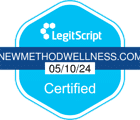In recent years, opioid addiction has emerged as a significant public health crisis, affecting millions of individuals and families worldwide. This blog article aims to provide an overview of opioid addiction, covering its causes, effects on health and society, available treatment options, and resources for support.
What are Opioids?
Opioids are a class of drugs that include both prescription pain relievers such as oxycodone, hydrocodone, morphine, and fentanyl, as well as illegal drugs like heroin. These substances are highly effective in managing pain but also carry a considerable risk of addiction due to their effects on the brain.
Causes of Opioid Addiction
Opioid addiction can develop for several reasons, including:
Prescription Misuse: Many individuals initially become addicted to opioids through legitimate prescriptions for pain management. Over time, they may develop tolerance and dependence, leading to misuse and addiction.
Seeking Pleasure: Opioids activate the brain’s reward system, producing feelings of euphoria and relaxation. This reinforcing effect can lead individuals to seek out the drug repeatedly, eventually leading to addiction.
Genetic Predisposition: Some people may be more genetically vulnerable to developing addiction than others, making them more susceptible to the effects of opioids.
Social and Environmental Factors: Factors such as peer influence, stress, trauma, and availability of opioids in the community can also contribute to the development of addiction.
Effects of Opioid Addiction
The effects of opioid addiction extend beyond physical health to impact various aspects of an individual’s life:
Physical Health: Long-term opioid use can lead to tolerance, meaning higher doses are needed to achieve the same effects, and dependence, where the body adapts to the presence of opioids and experiences withdrawal symptoms when the drug is stopped.
Mental Health: Opioid addiction is often associated with mental health disorders such as depression, anxiety, and increased risk of suicidal thoughts.
Social and Economic Consequences: Addiction can strain relationships with family and friends, lead to job loss or financial instability, and increase involvement with the criminal justice system.
Overdose and Death: Opioid overdose is a significant risk, particularly with potent opioids like fentanyl. Overdose deaths have risen sharply in recent years, highlighting the urgent need for effective prevention and treatment.
Treatment Options for Opioid Addiction
Treating opioid addiction is a complex process that typically involves a combination of medical, psychological, and social interventions:
Medication-Assisted Treatment (MAT): MAT combines medications such as methadone, buprenorphine, or naltrexone with behavioral therapies to help reduce cravings and withdrawal symptoms and support long-term recovery.
Behavioral Therapies: Cognitive-behavioral therapy (CBT), contingency management, and motivational interviewing are effective in addressing the psychological aspects of addiction and helping individuals develop coping strategies.
Support Groups: Programs like Narcotics Anonymous (NA) provide peer support and a sense of community for individuals in recovery from opioid addiction.
Residential Treatment: Inpatient or residential treatment facilities offer intensive, round-the-clock care and support for individuals with severe opioid addiction who require a structured environment to achieve sobriety.
Prevention and Awareness
Preventing opioid addiction involves efforts at multiple levels:
Education: Educating healthcare providers, patients, and the public about the risks of opioid use, proper pain management practices, and recognizing signs of addiction is crucial.
Safe Prescription Practices: Healthcare providers should follow guidelines for prescribing opioids cautiously, monitoring patients closely, and exploring non-opioid alternatives for pain management whenever possible.
Access to Treatment: Increasing access to evidence-based treatment options, including MAT and behavioral therapies, is essential for individuals struggling with opioid addiction.
Community Support: Building supportive communities that reduce stigma, provide resources for addiction recovery, and promote healthy lifestyles can help prevent opioid misuse and support individuals in recovery.
Resources for Support
For individuals and families affected by opioid addiction, seeking support and assistance is critical:
National Helplines: Organizations such as the Substance Abuse and Mental Health Services Administration (SAMHSA) offer confidential helplines and resources for individuals seeking information or treatment options.
Local Support Groups: Community-based organizations, faith-based groups, and addiction recovery centers often provide support groups and counseling services for individuals and families affected by addiction.
Online Resources: Websites and online forums provide information, resources, and peer support for individuals navigating opioid addiction and recovery.
Conclusion
Opioid addiction is a complex and challenging condition that requires comprehensive strategies for prevention, treatment, and support. By understanding the causes and effects of opioid addiction, promoting effective treatment options, and fostering community awareness and support, we can work towards reducing the impact of this epidemic on individuals, families, and communities. Through education, advocacy, and accessible resources, we can support individuals in overcoming opioid addiction and achieving long-term recovery and well-being. Together, we can make a difference in combating opioid addiction and promoting healthier, drug-free lifestyles for everyone.
Opioid Addiction FAQ
What is the opioid mechanism of addiction?
The opioid mechanism of addiction involves the interaction of opioids with receptors in the brain and body. Opioids bind to opioid receptors, primarily mu-opioid receptors, located in areas of the brain involved in pain perception and reward. When opioids activate these receptors, they can produce feelings of euphoria and pain relief, reinforcing their use. Over time, the brain adapts to the presence of opioids, leading to tolerance, where higher doses are needed to achieve the same effects. This tolerance can progress to dependence, where the body becomes reliant on opioids to function normally. Addiction occurs when compulsive drug-seeking behavior persists despite negative consequences. The cycle of addiction is driven by changes in the brain’s reward circuitry, which can be challenging to overcome without comprehensive treatment and support.
What drugs are considered opioids?
Opioids are a class of drugs that include both prescription medications and illegal substances. Common opioids include prescription painkillers such as oxycodone (OxyContin), hydrocodone (Vicodin), morphine, and codeine. Additionally, illegal opioids like heroin are also classified within this group. Synthetic opioids such as fentanyl, which is many times more potent than heroin, are also included in this category. Opioids work by binding to opioid receptors in the brain and body, affecting pain perception and producing feelings of euphoria. Due to their potential for misuse, opioids are highly regulated and monitored by healthcare providers and law enforcement agencies.
What drug is approved by the FDA to treat opioid addiction?
Buprenorphine is a medication approved by the FDA to treat opioid addiction. It is used in medication-assisted treatment (MAT) to help reduce withdrawal symptoms and cravings, making it easier for individuals to stop using opioids. Buprenorphine works by binding to opioid receptors in the brain, but it produces less euphoria and has a lower risk of overdose compared to full agonist opioids like heroin or oxycodone. This medication can be prescribed in various forms, including tablets, sublingual films, and implants, and it is typically used as part of a comprehensive treatment plan that includes counseling and behavioral therapy.







